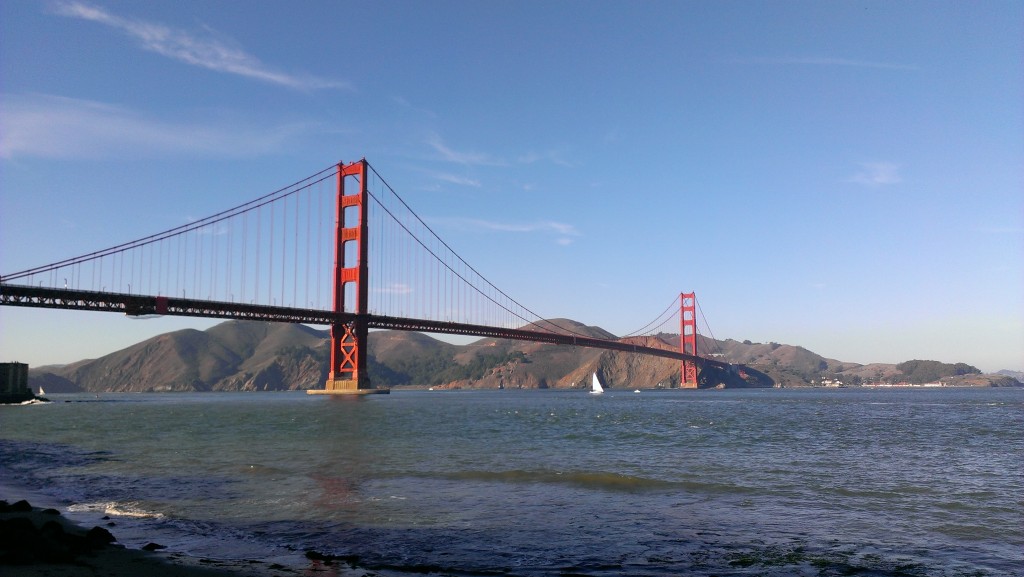My first day at AGU 2013 revolved around sessions on short-live climate forcers, which are components in the atmosphere that have short lifetimes (compared to carbon dioxide for example) and generally warm the atmosphere. Reduction of these compounds, such as methane and black carbon, has been mooted as a way to reduce global mean temperatures in coming decades.
This is summarised in the figure below, where the modelled impact of reducing black carbon and methane alongside reductions in carbon dioxide emissions are shown. The majority of the benefit in reducing methane and black carbon is felt by 2040 – if you look at longer time scales, then the effect diminishes relative to carbon dioxide.

Modelled impact of various reductions in carbon dioxide, methane and black carbon (BC) on global mean temperature. Figure courtesy of UNEP Integrated Assessment of Black Carbon and Tropospheric Ozone.
The problem with this idea is that there is much uncertainty related to these short-lived components, so it isn’t clear how much global temperatures would respond to a reduction in their atmospheric concentrations. This is represented in the above figure by the vertical bars to the left of the graph – there is much overlap here, which reflects this uncertainty. The health benefits of reducing black carbon in particular are quite clear though. Most of the talks focussed on black carbon and that is what I am also going to focus on below.
Fuzzy metrics
Tami Bond made some excellent and thought-provoking points on how short-lived climate forcers are framed relative to carbon dioxide. The key property for black carbon in the framework of near-term reductions in global temperature is its short lifetime in the atmosphere (days-to-weeks). This means that it is not evenly distributed across the globe, unlike greenhouse gases such as carbon dioxide and methane. This results in its radiative forcing being spatially distinct – the perturbation it has on our planets energy balance occurs close to its source of emission. The impact of such changes is usually felt more at the regional level, rather than the global scale associated with carbon dioxide. Her main point was that this is then an apples-to-oranges comparison, so for example, reducing black carbon emissions in Asia might not have a great impact of global mean surface temperatures but it may well reduce temperatures in the region and slow the effects of carbon dioxide driven warming.
She also reiterated the difficulties associated with the pollutants that are co-emitted with black carbon, which complicate the picture and are one of the major reasons that there is substantial uncertainty surrounding reducing black carbon. In the real world, you can’t really just reduce black carbon – any technological solution will likely perturb the other pollutants, which tend to cool our climate. Attempts to reduce black carbon might actually result in temperatures rising – I’ve written more on studies that have considered this here.
Other highlights
Yi Deng presented a fascinating study of how aerosol particles can influence the atmosphere far away from their actual location by modelling the impact of biomass burning in Southern Africa on the Asian Summer Monsoon. He showed that the substantial burning that occurs actually strengthens the monsoon by inducing circulation changes up-wind of the Indian sub-continent and south-east Asia. We tend to think of aerosol impacts being confined to their atmospheric location but this illustrated how joined-up our atmosphere is.
One of the issues with black carbon is that some sources have received little attention previously. Ed Fortner from Aerodyne Research Inc. presented measurements of emissions from brick kilns in Mexico, which produce a lot of black carbon. There are around 300,000 kilns worldwide producing 1.5 billion bricks per year! Over half of these are in China (54%), with India (11%), Pakistan (8%) and Mexico (7%) being the other major kiln hotspots. Characterising the emissions from these and other sources is likely going to be in important for efforts to constrain the impact of black carbon on both our climate and health.
Chris Cappa presented follow-up work to his 2012 paper in Science that investigated how much warming by black carbon is enhanced by other aerosol species that coat it. Black carbon warms the atmosphere by absorbing sunlight and both laboratory and theoretical evidence suggests that this is increased by coatings on the black carbon particles. This coating focusses sunlight onto the black carbon core, like a magnifying glass held to the sun does and this increases the absorption by the black carbon, a phenomenon known as “lensing”. Chris has been busy testing how much enhancement we see in the real world using measurements and typically to enhancement ranges from 10-30%, which is lower than is often suggested by aerosol models. There are significant caveats here as the measurements are challenging and require the aerosols to be “dry” – this is important as water often condenses onto aerosol particles and increases their reflective and lensing ability. This could be a vital ingredient in this process and it is a significant challenge to overcome.
My final highlight was presenting my poster! The AGU poster hall is absolutely massive and must span several football pitches. Despite this, the sessions are hugely rewarding and are a great opportunity to discuss science with a variety of people. The posters are a major part of the AGU fall meeting, which is not always true of other conferences. I’m looking forward to roaming the hall now that my own poster is done.

Me presenting my poster on day 1 of AGU 2013. Image courtesy of Sam Illingworth.
Communicating uncertainty
With all this complexity revolving around black carbon and the interest it has received from policy makers, Tami Bond was asked how to communicate this to non-scientists. Her response was:
Keep it simple but don’t ignore physical reality.
That seems like a pretty good mantra to me.





